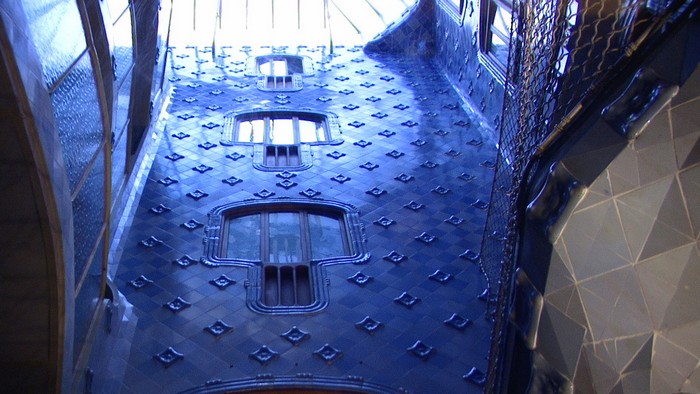Working with Nature – A Change of Direction for Tomorrow’s Buildings
We can learn a great deal from the past about using nature to full effect in buildings. Consider Gaudi’s Casa Batllo, built in 1877 in Barcelona. Not only is the design breath-taking, but one is in awe of the ways natural light and ventilation created an astonishingly comfortable building over 120 years ago.
Some features include casements and pivoting windows, adjustable ventilator slots, light wells with varying window apertures and wall colours to balance the natural lighting and air flows between upper and lower levels.
This is in stark contrast to most modern buildings, with uniform dark glazing, no natural lighting and no variation in window apertures with height. There is very little use of natural light, instead 400 Lux of fluorescent lighting is common. Façades are fully sealed, with interiors being fully air-conditioned. In some cases mixed mode perimeter heating and interior cooling occur simultaneously, and emissions are well above Green Building Council of Australia cut-off level of 110kgCO2/m2.
Where did we go wrong? We seldom ever considered the environment when we created artificially illuminated airconditioned boxes, instead the focus was on comfort and a tight band of acceptable temperatures, humidities and lighting levels. Then designed mechanical and electrical systems to fulfill our needs.
So are we changing our approach? The answer, regrettably, is only sometimes. Some cities are so polluted that buildings now have to be sealed. Overshadowing is rarely considered and variable lighting systems are not widely used. Developers and E&M engineers often have no incentive to optimize and reduce energy consumption, particularly when scope and fees do not allow for a thorough assessment of natural lighting opportunities, natural ventilation and mixed mode systems.
There are a few ways that we can move to a higher level of sustainability, reducing energy consumption and our carbon footprint. Firstly make a sustainability rating (Greenstar 4 star, or LEED Silver) mandatory for all new buildings. Encourage architects and planners to maximize the benefits of solar access for natural lighting, and minimize the impacts of solar heat gain through modulating the envelope based on factors utilized by Gaudi over a century ago, and avoid a monolithic grid approach. Change our strategies in the design of A/C systems based on actual solar radiation levels over the façade, reduced heat loads by using more efficient lighting systems, and consider mixed mode systems that allow the A/C to be switched off.

